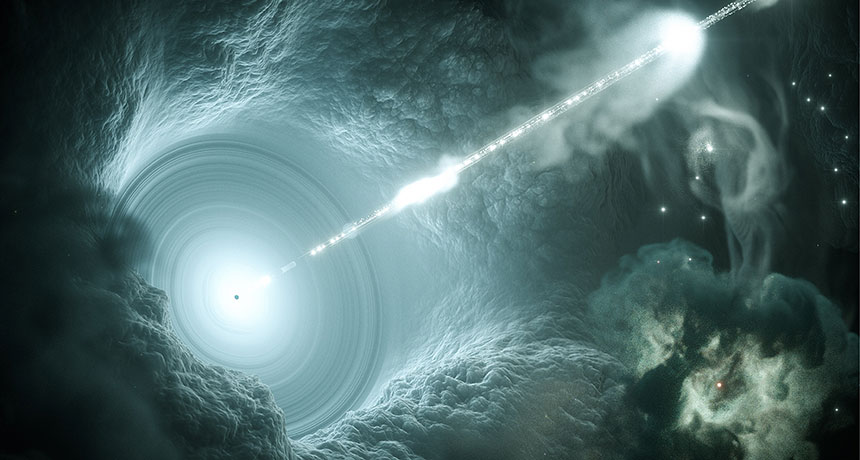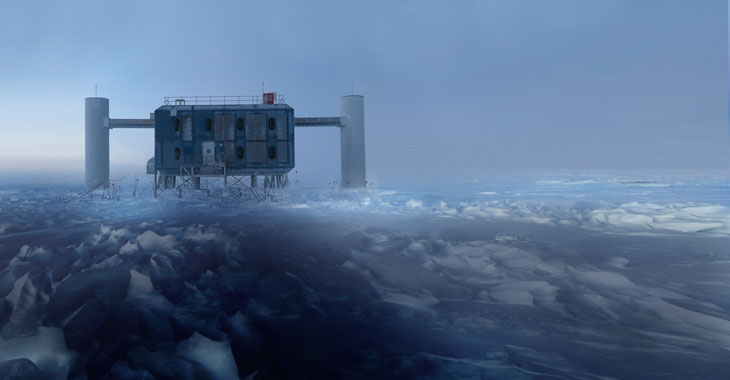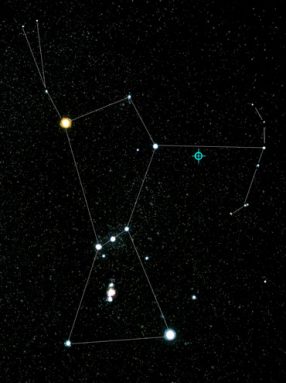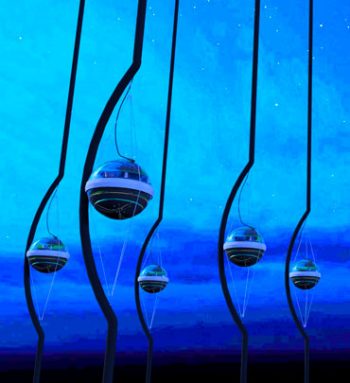Scientists traced an incoming neutrino back to its galactic birthplace
Detectors beneath the South Pole spotted the high-energy particle as it slammed into the ice

Scientists traced a high-energy neutrino back to its birthplace: a blazar. That galaxy harbors a supermassive black hole that fuels powerful jets of particles.
Science Communication Lab/DESY
A zippy little subatomic particle has been traced back to its source. This neutrino was born in a flaring galaxy 4 billion light-years away. This discovery solved a longstanding cosmic whodunit.
Scientists had long puzzled where certain high-energy particles from space were born. These bits of matter can batter Earth at energies that outstrip the world’s most advanced particle accelerators. Now, physicists report finding the source of an energetic neutrino. This cosmic voyager came from a type of distant bright galaxy called a blazar. Owing to a powerful black hole at its core, this type of galaxy flings out particles. They fly across the cosmos blindingly fast — some at nearly the speed of light
Other cosmic sources for high-energy neutrinos also may exist. But on July 12, scientists announced online, in Science, the discovery that blazars create some of those neutrinos.
“This is super exciting news,” says Angela Olinto at the University of Chicago in Illinois. She’s an astrophysicist who was not involved with the new research. The new finding, she says, marks “the beginning of what we call neutrino astronomy.” It uses the lightweight — indeed, nearly massless — neutrinos to unveil secrets of cosmic oddities (such as those blazars).
The new data suggest that blazars also emit cosmic rays. This second type of energetic particle is produced together with neutrinos. Until now, where high-energy cosmic rays come from has been poorly understood. In fact, until now, “nobody has ever been able to pinpoint a source [of] them,” says Francis Halzen. He’s an astrophysicist at the University of Wisconsin–Madison. He’s also a research leader of IceCube, the Antarctic neutrino observatory that detected the particle.

IceCube is located at the South Pole. It was constructed within a cubic kilometer (a quarter cubic mile) of ice. Thousands of sensors embedded within the ice measure the light produced when neutrinos slam into ice. On September 22, 2017, IceCube detected a neutrino with an energy of nearly 300 trillion electron volts! (For comparison, high energy protons at the Large Hadron Collider in Geneva, Switzerland, reach only some 6.5 trillion electron volts.)
Hunting the neutrino’s birthplace
Physicists traced the neutrino’s path backward. In this way, they zeroed in on a patch of sky. It resides in the direction of the constellation Orion.
Afterward, astronomers leapt into action. They trained telescopes around the world at the same patch of sky. They used these to hunt for light that might reveal the neutrino’s source.

In that patch of sky, the Fermi Gamma-ray Space Telescope spotted a flare of gamma rays. These rays are a type of high-energy light. Those gamma rays were coming from a blazar. An enormous black hole powers that galaxy, sending radiation blazing toward Earth. Other telescopes then observed the blazar’s flare in wavelengths longer than gamma rays (such as X-rays and radio waves).
High-energy neutrinos with a well-defined incoming path are rare. IceCube sent astronomers only 10 reports of such detections in the 18 months before this neutrino showed up. And this neutrino marked the first time researchers were lucky enough to also spot its source.
“This is really what IceCube was built for — to try to see high-energy neutrinos from these exotic sources,” says Kate Scholberg. She is a neutrino physicist at Duke University in Durham, N.C., but was not involved with the new research.
Previously, scientists had found birthplaces for of neutrinos with much lower energies. One was an exploding star. The other was the sun. But high-energy neutrinos have been more elusive. While there had been hints of high-energy neutrinos coming from blazars, the new detection is the first to solidly link blazars to high-energy neutrinos.
Researchers then went back to the IceCube data and looked for more neutrinos that might have come from the blazar. “There was something interesting happening there,” says Naoko Kurahashi Neilson. She’s an IceCube researcher at Drexel University in Philadelphia, Pa. Over seven months starting in September 2014, IceCube picked up a neutrino flare — an excess of high-energy neutrinos — from that vicinity. Researchers have now described this flare in a second paper, published July 13 in Science.
Cosmic mystery remains

Blazars remain poorly understood. One mystery: What types of particles do they blast out? Because high-energy neutrinos must be produced along with protons, finding these neutrinos means that blazars must also create cosmic rays. (Cosmic rays consist of protons and atomic nuclei.)
Ultrahigh energy cosmic rays have been recorded coming in to Earth. Scientists have puzzled over what could rev up particles to such extreme energy levels. “This may be a clue to their origin,” says Floyd Stecker. He’s an astrophysicist at NASA’s Goddard Space Flight Center in Greenbelt, Md. Still, he adds, it’s not clear whether blazars can accelerate protons to the highest energies seen arriving from space.
Those ultra-high-energy cosmic rays are known to come from outside the Milky Way. In general, cosmic rays leave few clues of their source. Why? As they travel through space, their paths can be twisted by magnetic fields that they encounter along the way. Later, their trajectories will no longer point reliably back to their sources.
Neutrinos, however, have no electrical charge. So magnetic fields will not alter their path. That means they will travel in a straight line from their origin. Since high-energy cosmic rays and neutrinos are created together, blazar-born neutrinos can help scientists better understand cosmic rays, too, Olinto says. “What neutrinos gave us is a way through the fog.”







